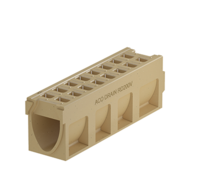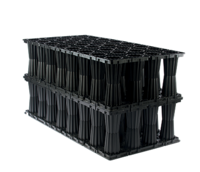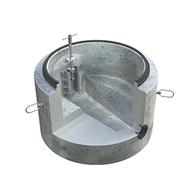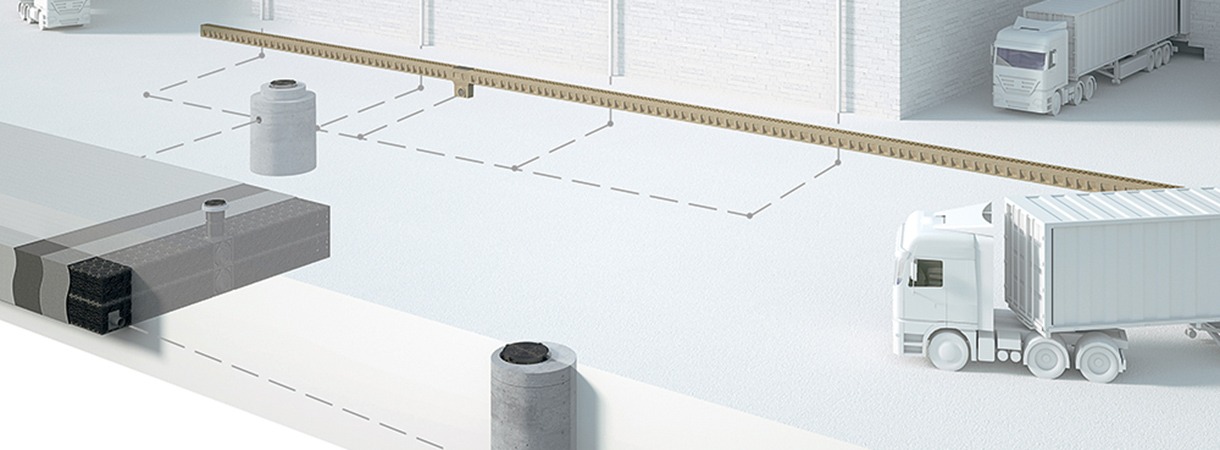
ACO Infrastructure – MonoBloc
ACO MonoBloc is a drainage system with a monolithic design: The channel and grate are produced
from polymer concrete in one casting. The result is an extremely stable unit without loose parts. There is also no need for bonded joints. The unique monocast design guarantees maximum safety and stability, even under the extreme loads of large area drainage.

ACO StormBrixx®
ACO StormBrixx SD or HD are geocellular stormwater storage products that can be used for detention, retention, reuse and infiltration. The surface water is stored temporarily in the numerous voids in the system and can then be released in a controlled way. In this way, overloading of the sewer network is avoided in cases of heavy rainfall.

ACO Flow Restriction System
The discharged quantities from the ACO StormBrixx block storage are adjusted and controlled via the ACO flow restriction manhole, a manhole structure made of reinforced concrete with integrated flow
restriction valve for individual reduction of the discharge pipe cross section. In this way, collected surface water is discharged into the sewer in a controlled way, without overloading it.

